Contents
Network switches and routers are both crucial components in modern networks. They look similar but feature different designs and functions. A network switch acts as the central hub, ensuring the flow of data within a local network; while a network router navigates paths for data to flow among different network devices. Understanding the nuances of these devices and their differences contributes to establishing robust and reliable network connectivity.
What is Network Switch?
A network switch is an essential networking device used to connect multiple devices and exchange data packets within a LAN. It enables multiple devices to share a network and prevents interference from each other. Because of its features, it is also called a switching hub, bridging hub, and Media Access Control (MAC) bridge.

How Does It Work?
The network switch connects various devices within a local area network. Each network device has its own MAC address stored in the network interface card (NIC). Once the device is connected to the network switch, the network switch sends the data packets and checks the MAC address of the device to identify and match the right destination. To reduce the collision of the switch and the connected devices, most network switches support full-duplex functionality allowing traffic to travel in dual directions.

Common Types of Network Switch
Network switches can be divided into different types based on their capabilities. Here are some common examples:
- Unmanaged Switches: These switches are plug-and-play devices with a simple and fixed configuration. Unmanaged switches are suitable for small networks but are not ideal for enterprise networks due to their lack of some features.
- Managed Switches: Managed switches and unmanaged switches are quite different. It has a complex configuration with more capabilities than unmanaged switches. And it is more flexible and secure than unmanaged types.
- Layer 3 Switches: These switches, known as routing switches and multilayer switches, possess built-in routing capabilities and basic switching They are designed for different subnets and VLANs to make better network segmentation and traffic control.
- PoE Switches: PoE switches can transmit both electrical and data power over the same Ethernet cable, which eliminates the need for separate power. PoE switches can be used for IP cameras, VoIP phones, and other IoT devices.
Pros and Cons
Pros
- The network switch helps enhance the network performance.
- Reduces the number of broadcast domains, which reduces unnecessary traffic.
- Managed network switches help offer advanced security features like VLANs and port security.
- Supports full-duplex communication, allowing for simultaneous sending and receiving data.
Cons
- The switch is usually costly.
- Managed network switches require complex configuration and management, so they require professional technicians to set up and manage in most cases.
What is Router?
A router is a networking tool that helps connect different networks, which is often used in LAN (Local Area Network), WAN (Wide Area Network), and MAN (Metropolitan Area Network). The router works at layer 3 of the OSI model and allows the data packet to move from one network to another network. A large network usually requires one or more routers to effectively manage the traffic.
How Does It Work?
The router usually works in cooperation with modems to make successful communication between devices and the internet. When the router receives the data packet from the connected device, it will examine the packet’s header to determine the IP address. Then the router will determine the best path to the destination network according to a routing table. In general, the router makes sure that the data packets end up in the right place instead of getting lost in the network.
Types of Routers
- Wired Router: A wired router is a traditional version that uses cables to connect modems and computers, receiving and distributing data packets within local area networks (LANs). The Ethernet broadband router is a classic wired router.
- Wireless Router: A wireless router, also referred to a Wi-Fi router, is a network device used in wireless local area networks (WLANs). It converts the wired broadband data into wireless radio signals. A wireless router usually features multiple antennas for better coverage and supports various Wi-Fi standards.
- Core Router: Core routers serve as the backbone of a network with their high speed, high throughput, low latency, and reliability. They are used to distribute data packets within one network rather than multiple networks. Core routers are designed for dealing with heavy data transformations at a high-performance level.It can be a wireless or wired router.
- Edge Router: The edge router can be a wireless or wired router. As the name suggests, edge routers are placed at the edge or boundary of networks. Connected to the Internet or ISP, these routers are used for maintaining seamless and effective communication among different networks. With the help of edge routers, network resiliency and density are enhanced.
Pros and Cons
Pros
- The router can establish multiple connections among various devices and networks without cable tangling.
- Provides a secure network access.
- It can deliver data packets via the best path with the routing table.
Cons
- The router features limited bandwidth and may cause some latency if there is too much traffic.
- Routers require a complex initial configuration and network address translation before smooth operation.
What are the Differences between Network Switches and Routers
- Operational OSI Model Layers: Most network switches usually work at layer 2 though layer 3 switches are also available. The router works on the network layer 3.
- Broadcasting Domains: Each port of the router has its broadcast domains while the network switch only has one broadcast domain if it doesn’t use virtual LANs. Each port of the switch also has its separate collision domain.
- Data Formats: Routers process data in the form of packets. Network switches, however, manage data in both forms of data packets and frames.
- Routing: The network switch generally uses content-accessible memory (CAM) tables to find the MAC address, while the router identifies the IP address in the routing table.
- Network Connection: Routers can be used in LANs, WANs, and MANs while network switches are usually used in LANs.
- Modes of Transmission:Network switches support both full-duplex and half-duplex modes of transmission, allowing users to select the auto-negotiation mode for their preference. Each device connected to the switch port operates in its collision domain in half-duplex mode. In full-duplex mode, each device has a separate transmitter and receiver. Routers operate in full-duplex mode by default, but users can switch it to half-duplex if they want. Fewer collisions may occur when using routers.

Router vs. Switch vs. Hub
The router and switch are more intelligent network devices that can understand source and destination, while the hub works by broadcasting data without such understanding. They operate at different layers of the OSI model, the hub functions at layer 1, the switch works at layer 2, and the router operates at layer 3. Despite the limited intelligence, the hub is the most cost-effective among these three devices.
Layer 3 Switch vs. Router
Both layer 3 switch and router work on the network layer 3 of the OSI model. The main difference between layer 3 switches and routers is the hardware. A layer 3 switch combines the function of both traditional switches and routers. The ports on a layer 3 switch are limited but a router usually has more ports concluding SDH, SONET, E1/T1, etc. Routers are devices that connect LAN to WAN, while network switches are only used for LAN.
Final Words
Routers and network switches are playing an integral role in establishing networks. Routers help connect different networks and manage IP addresses, while network switches are used for local network communication. It is necessary to distinguish the differences between network switches and routers for effective network management and optimization.
FAQs
Do I need a switch or is a router enough?
If your router has available Ethernet ports, it means the router has a built-in switch. Thus, you don’t need another switch unless you need more ports.
Is a router the same as a modem?
No. The modem is a device that provides internet service from an ISP and brings an internet connection to your home. In contrast, the router connects multiple devices within your home to the internet provided by the modem.
Can I use a router as a switch?
Yes. If you don’t need a routing functionality on the router, it can be used as a switch with a simple configuration.
For more information on this topic, you can keep up on our blogs. While VCELINK offers general and basic information for our customers and other visitors to the website, it’s not professional advice.
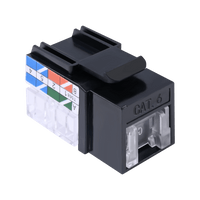
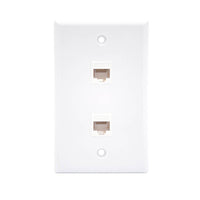
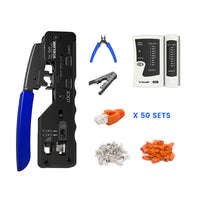
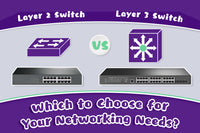
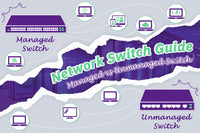

Be the first one to comment.
Leave a comment